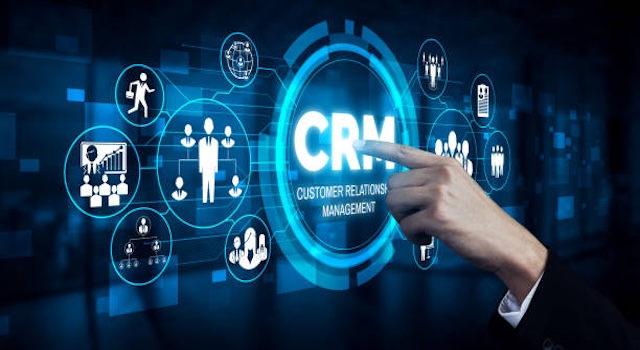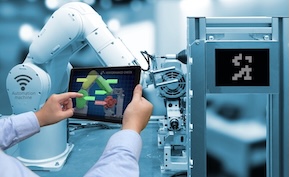CRM
Hyper-Personalization in CRM: Delivering Customer Experiences at Scale

Hyper-Personalization at Scale: The New CRM Imperative
In the modern digital marketplace, customer experience is no longer just a differentiator — it’s the battlefield for brand loyalty. Today’s buyers expect seamless, relevant, and context-aware engagement across every touchpoint. Yet, delivering that kind of personalization for thousands or millions of customers simultaneously has long been a challenge. Enter hyper-personalization — a data-driven, AI-enabled evolution in customer relationship management (CRM) that makes truly individualized experiences possible at scale.
From Segmentation to True Personalization
Traditional marketing relied on segmentation: grouping customers by demographics or purchase history and sending generalized messages to each cohort. But in an age where customers interact through multiple channels — from mobile apps and chatbots to social media and email — those broad-stroke tactics no longer suffice. Modern CRMs have shifted from segmentation to individualization, powered by real-time data integration and artificial intelligence.
Today’s CRM platforms consolidate behavioral data, preferences, and interaction histories from dozens of systems. When combined with AI analytics, this data allows businesses to tailor messaging, recommendations, and offers for each individual — at exactly the right time and in the right channel. It’s personalization not as a campaign strategy, but as an always-on business model.
The Technology Behind Hyper-Personalized CRM
Delivering personalization at scale requires more than good intentions — it demands a sophisticated architecture built on automation, analytics, and connectivity. The following technologies power the next generation of CRM personalization:
- Real-Time Data Integration: Modern CRMs pull in live behavioral signals — browsing activity, in-app engagement, and even sensor data — from multiple platforms through APIs and data pipelines.
- AI and Machine Learning: Algorithms analyze thousands of data points per user to determine what product, service, or message is most relevant at that moment.
- Customer Data Platforms (CDPs): CDPs unify structured and unstructured data from different tools into a single, actionable profile for each customer.
- Dynamic Content Engines: CRM-connected automation tools can adapt web pages, emails, and chat responses in real time based on the customer’s behavior and preferences.
Together, these technologies turn CRMs into intelligent orchestration hubs — not just storing data, but using it to anticipate customer needs before they’re expressed.
Examples of CRM Personalization in Action
Leading organizations are already harnessing hyper-personalized CRM experiences across industries:
- E-commerce: AI-powered CRMs analyze purchase history and browsing behavior to recommend products dynamically or adjust discounts for each shopper.
- Financial services: CRMs use predictive analytics to recommend investment options or financial plans based on client profiles and market conditions.
- Healthcare: CRMs personalize patient engagement by sending appointment reminders, preventive care content, and follow-up surveys tailored to specific health journeys.
- B2B sales: Intelligent CRMs recommend the next best action or piece of content for each account, based on engagement scores and stakeholder sentiment analysis.
These use cases share a common goal: make every interaction feel like a one-on-one conversation, even when the audience numbers in the millions.
The Business Value of Hyper-Personalization
Hyper-personalization delivers measurable ROI across every stage of the customer lifecycle. Companies adopting AI-driven CRM personalization see higher engagement, conversion rates, and lifetime value. According to McKinsey, personalization can drive up to a 20% increase in sales efficiency and a 10-30% lift in marketing ROI.
Beyond financial performance, personalized interactions strengthen emotional connections with customers. When a brand consistently “remembers” preferences, timing, and tone, customers interpret that as care — not just automation. Over time, this builds trust and loyalty that competitors struggle to replicate.
Challenges of Delivering Personalization at Scale
While the benefits are clear, executing hyper-personalization is not without challenges. Many organizations face limitations around data quality, integration, and privacy. Here are key hurdles and how leading companies are overcoming them:
- Data Silos: Customer information often lives in disconnected systems (marketing automation, ERP, support). A unified data architecture or CDP is essential to creating a single customer view.
- Privacy Regulations: Compliance with GDPR, CCPA, and emerging data laws requires transparency in how customer data is collected and used. Modern CRMs now include consent management and audit trail capabilities.
- Content Scalability: Delivering personalized messages at scale requires modular content and automation workflows that adapt contextually, not manually.
- Organizational Alignment: Personalization requires marketing, sales, and service teams to collaborate around shared customer KPIs and integrated data sets.
Organizations that succeed treat personalization as a strategic discipline, not a technical feature. They build cross-functional teams that combine data science, content strategy, and customer experience design under a single vision.
Data Integration: The Hidden Powerhouse
Behind every hyper-personalized experience lies seamless CRM data integration. APIs and data pipelines ensure that CRM systems continuously sync with marketing platforms, social media analytics, and e-commerce databases. When a customer updates their preferences or engages with a chatbot, that information instantly flows back into the CRM, updating their profile and influencing future interactions.
This unified data flow creates a “live” customer graph — a continuously updated, 360° view that fuels predictive analytics and real-time personalization. The more connected the data ecosystem, the smarter the CRM becomes.
AI + Human Empathy: The Personalization Equation
It’s easy to assume that hyper-personalization is purely a technological feat, but the best CRM strategies combine AI-driven intelligence with human empathy. While algorithms can predict preferences, it’s human insight that ensures those experiences remain authentic and ethical. In 2025 and beyond, the companies that win will balance automation with authenticity — using data to enhance, not replace, genuine connection.
The Future: Adaptive Experiences and Predictive Engagement
The next frontier for CRM personalization is adaptive engagement — systems that automatically adjust how, when, and where they communicate based on real-time feedback. For example, if a prospect stops engaging with email, the CRM might automatically shift outreach to social media or SMS. These self-optimizing systems will make personalization both dynamic and autonomous.
In parallel, predictive engagement models will use AI to anticipate what customers want next — not just respond to what they’ve already done. This predictive layer turns CRM platforms into proactive partners that drive continuous relevance and value.
Conclusion: Personalization as a Strategic Imperative
Hyper-personalization is reshaping the foundation of CRM. It’s no longer enough to know your customers; you must understand them in real time. With AI, data integration, and scalable automation, businesses can now deliver individualized experiences that delight customers and differentiate brands. The organizations that invest early in CRM personalization technology will define the standard for customer experience in the years ahead.






